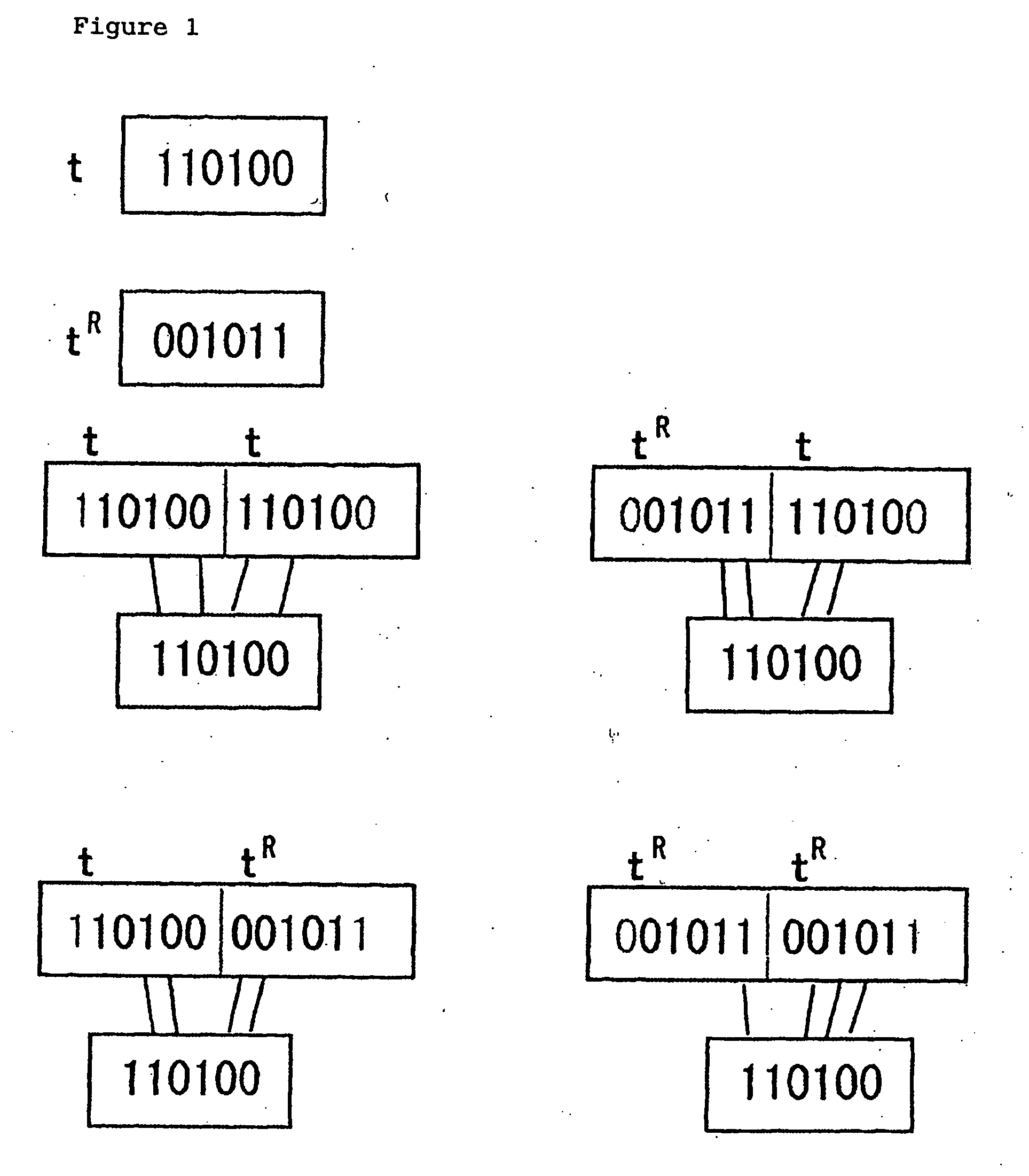Method for designing dna codes used as information carrier
- Summary
- Abstract
- Description
- Claims
- Application Information
AI Technical Summary
Benefits of technology
Problems solved by technology
Method used
Image
Examples
example
[0064] The present invention is described below more specifically with reference to Example, however, the technical scope of the present invention is not limited to the following exemplification.
(DNA ASCII Code)
[0065] When the design of the ASCII code (128 letters) using DNA is considered, one DNA codeword is used for each of the letters such as alphabet. One of shorter error-correcting codes with at least 128 codes is the nonlinear (12,144,4) code (Sloane, N. J. A. and MacWilliams, F. J.: The Theory of Error-Correcting Codes. Elsevier, 1997). The above notation (12,144,4) reads ‘a length-12 code of 144 words with the minimum distance 4’ (one error-correcting, two error-detecting). By using a Max Clique Problem solver (http: / / rtm.science.unitn.it / intertools / ) among 144 words, 32, 56, and 104 words can be selected which satisfy the length 6, −7, and −8-subword constraints, respectively. The code represented by (12,144,4) is shown in Table 7, and codewords with dagger among 144 cod...
PUM
| Property | Measurement | Unit |
|---|---|---|
| Electric charge | aaaaa | aaaaa |
| Electric charge | aaaaa | aaaaa |
| Length | aaaaa | aaaaa |
Abstract
Description
Claims
Application Information
 Login to View More
Login to View More - R&D
- Intellectual Property
- Life Sciences
- Materials
- Tech Scout
- Unparalleled Data Quality
- Higher Quality Content
- 60% Fewer Hallucinations
Browse by: Latest US Patents, China's latest patents, Technical Efficacy Thesaurus, Application Domain, Technology Topic, Popular Technical Reports.
© 2025 PatSnap. All rights reserved.Legal|Privacy policy|Modern Slavery Act Transparency Statement|Sitemap|About US| Contact US: help@patsnap.com

